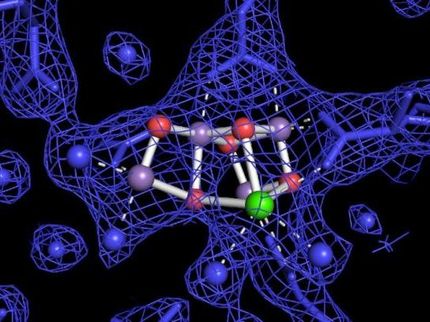Plant Stem Cells Hold Their Breath
Joint efforts of RWTH and international researchers reveal that oxygen deficiency is required for proper development of plants.
A single tree can release more than 120 kg of oxygen into the Earth’s atmosphere in a year thanks to photosynthesis. However, just like animals, plants also require oxygen in order to produce energy. Non-green plant organs such as roots and the interior of stems, unable to carry out photosynthesis and produce oxygen, are especially affected by limited oxygen provision (hypoxia), which could easily lead to reduced plant productivity or crop loss. Researchers from RWTH Aachen University, the Scuola Superiore Sant’Anna in Pisa, the University of Copenhagen, and the University of Heidelberg have now discovered that low oxygen concentration is not necessarily detrimental to plants, but that it also provides essential conditions for plant growth.
Equipped with microscopic oxygen probes, the researchers were able to measure the oxygen concentration of a tissue cubicle of approximately 30 cells, also known as the shoot apical meristem. They found that in this region, a niche of low oxygen envelops the stem cells which are responsible for the production of new leaves and flowers. Here, low oxygen levels control the rate at which new leaves are produced by promoting the stability of a protein named ZPR2, which is responsible for cell proliferation and differentiation. This discovery follows those made in recent years about the control of plant metabolism in anaerobiosis and greatly increases our understanding of how the production of new organs is connected to environmental parameters that affect plant growth and productivity.
The low oxygen level requirement to maintain pluripotent cells is not just unique to plants. Several types of animal or human stem cells share the same feature. This is remarkable since plants and animals are only distantly related in an evolutionary context, but both rank at the highest level of complexity in terms of multicellular organization. Apparently, the establishment and maintenance of low oxygen levels is essential for successful pluripotent cell activity. Therefore, this trait must have developed independently in plants and animals.
Applications of this discovery are twofold. Breeders now have a new target for selecting novel crop varieties better adapted to maintaining productivity in suboptimal environments that affect plant respiration, such as high temperature or rapid flooding. Moreover, researchers are now in a position to compare plant and animal stem cells to uncover the secrets of pluripotency maintenance and development of organs.
Original publication
Other news from the department science

Get the life science industry in your inbox
By submitting this form you agree that LUMITOS AG will send you the newsletter(s) selected above by email. Your data will not be passed on to third parties. Your data will be stored and processed in accordance with our data protection regulations. LUMITOS may contact you by email for the purpose of advertising or market and opinion surveys. You can revoke your consent at any time without giving reasons to LUMITOS AG, Ernst-Augustin-Str. 2, 12489 Berlin, Germany or by e-mail at revoke@lumitos.com with effect for the future. In addition, each email contains a link to unsubscribe from the corresponding newsletter.

















































